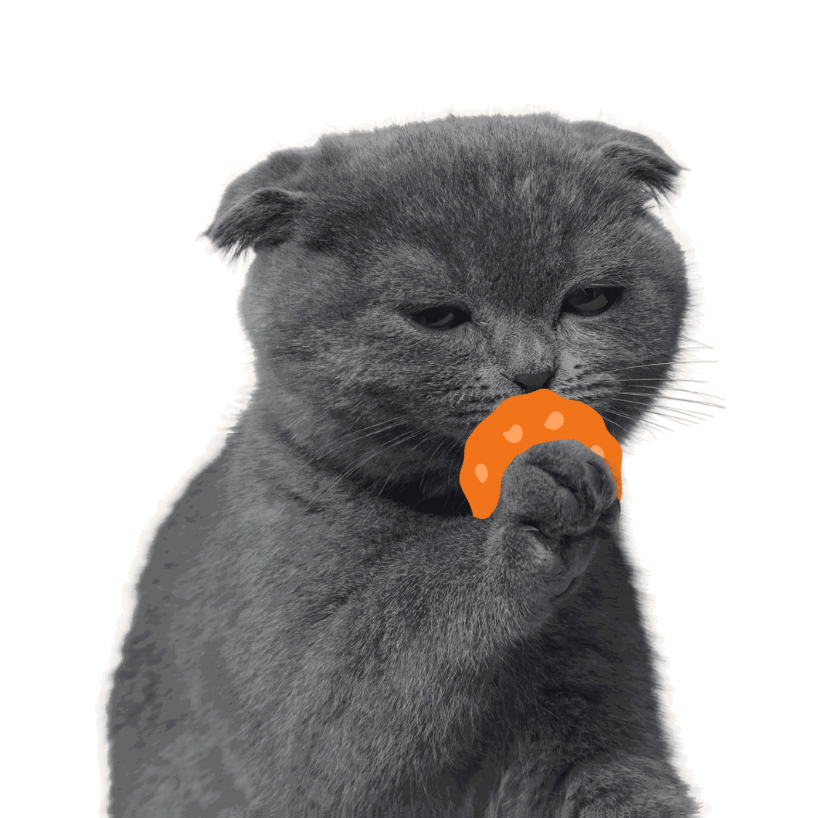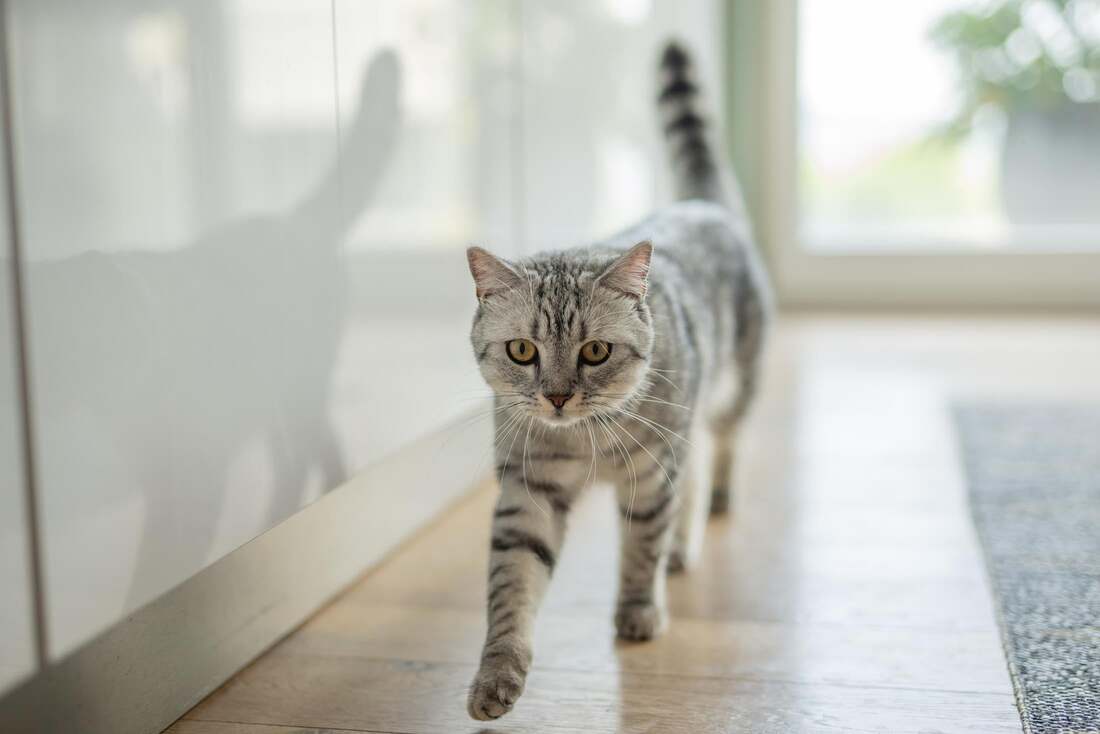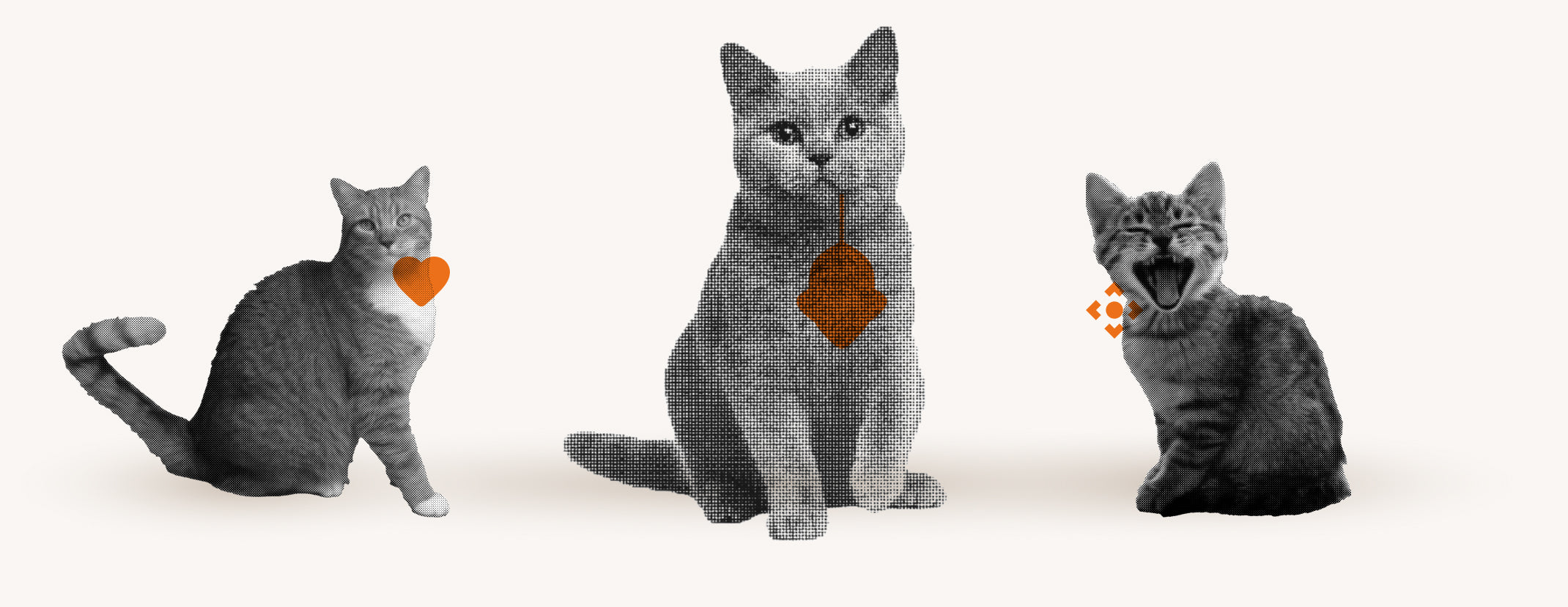When is the right time to switch from kitten to adult cat food?
Many cat owners are unsure when they should change their growing cat’s diet.
In general, it is recommended to switch cats to adult cat food from the age of about one year.
In this blog post, you will learn how to recognize that your cat is ready for adult food, how to best make the food change and what special nutritional needs older cats have.
Signs that your cat is ready for adult cat food

When your cat reaches around one year of age , it's time to think about switching from kitten food to adult cat food. A clear sign that your cat is ready for adult cat food is when they reach at least 90% of their expected final size . This can vary depending on breed and individual development, but generally most cats are ready for this important step in their diet by 12 months of age.
In addition to physical development, there are also behavioral signs that indicate that your cat is ready for adult cat food:
- Reduced growth rate
- stabilization of the energy level
- Less frequent cravings for food, as adult cat food is often more nutritious and keeps you full for longer
These behavioral changes are an indication that the high-energy kitten food no longer meets the needs of your growing cat.
Another important step is to consult with your veterinarian . The veterinarian can confirm whether your cat is physically and healthily ready to transition to adult cat food. They can also make specific recommendations for the type of food that best suits your cat's needs, especially when it comes to special dietary needs or allergies. Proper nutrition is crucial to your cat's long-term health, so it's important to plan and execute this transition carefully.
Instructions for changing food from kitten to adult
The transition from kitten food to adult cat food should be done gradually so as not to overwhelm your cat's digestive system. Start by mixing small portions of the new food into the usual kitten food. A good ratio to start with could be 25% new food and 75% old food. Over the next few days, you can gradually increase the proportion of the new food. Make sure that the new food is of high quality and meets the nutritional needs of your adult cat.
Watch your cat closely during the food change. It is normal for cats to be hesitant at first or not to accept the new food right away. Watch for signs of digestive problems such as diarrhea or vomiting. If such symptoms occur, reduce the amount of the new food and consult a veterinarian if necessary. Here are some points to look out for:
- appetite changes
- changes in bowel movements
- General behavior and activity level
The transition from kitten food to adult cat food is an important step and should not be rushed. Plan a period of at least one week for the entire transition to give your cat enough time to get used to the new food. Also, always make sure that fresh water is available, especially if you are switching from wet food to dry food. This gradual introduction will help to increase acceptance of the new food and protect your cat's health.
Nutritional needs and food types for senior cats

As your cat gets older, their nutritional needs change significantly. Cats who reach the age of ten to twelve are considered seniors and require a specially adapted diet. The reason for this is the changed metabolism of older cats, which requires a different composition of nutrients to support their health and vitality. High-quality food for senior cats should have the following properties:
- A reduced number of calories to avoid obesity, as older cats are less active.
- A higher nutrient density to meet the need for vitamins and minerals.
- Adapted protein sources that are easily digestible and do not burden the kidneys.
In addition to adjusting the nutrient composition, the consistency of the food is also an important factor. Many older cats suffer from dental problems or a diminished sense of smell and taste, which can make it difficult to eat. Therefore, switching to softer wet food or specially developed dry food that is easy to chew can be a good idea. It is crucial that you closely observe your senior cat's feeding behavior and react quickly to signs of loss of appetite or digestive problems. Regular consultation with the veterinarian will help to optimally adapt your cat's individual diet plan and maximize its quality of life in old age.
Discover how Flappie can improve your cat's life
Imagine being able to make your cat's life safer and healthier without having to constantly keep an eye on what they bring home. That's exactly what Flappie makes possible with its smart cat flap. This innovative solution offers selective access control that automatically detects whether your cat returns alone or with unwanted prey. The camera integrated into the flap uses artificial intelligence to decide whether to grant access or not. Here are some of the benefits Flappie offers:
- Security for your home by preventing prey such as mice or birds from entering the house.
- Health benefits for your cat as there is less risk of them bringing diseases or parasites into the house through prey.
- Less stress for you and your cat as you no longer have to intervene manually to remove the prey.
In addition to the smart cat flap , Flappie also offers a user-friendly app that revolutionizes the experience for cat owners. With the Flappie app, you can monitor your cat's activities, adjust settings on the cat flap and be informed immediately via push notifications when your cat tries to come home with prey. The app also allows you to receive exciting videos and photos of your cat, which provides additional entertainment. The combination of smart technology and practical app makes Flappie an indispensable helper for all cat owners. Visit flappie.ch now to learn more and discover how you can improve your cat's well-being with Flappie . Here are some highlights of the Flappie app:
- Real-time monitoring and control of the cat flap, no matter where you are.
- Interactive notifications and updates on your cat's activities.
- Access to exclusive content such as videos and statistics that show your cat's behavior and health.
Frequently Asked Questions
When to switch from kitten to adult food?
You should switch your cat to adult cat food when it is about one year old. The change should be made gradually, starting with small portions of the new food mixed into the usual kitten food. Over the next few days, you can gradually increase the proportion of the new food.
When is a cat considered an adult?
A cat is considered an adult when it has reached the age of about one year and has reached at least 90% of its expected final size. This age marks the transition from the kitten to the adult phase.
What does Adult mean in cat food?
In cat food, "adult" means that the food is specifically formulated for adult cats that have reached their full body size and whose nutritional needs are different from those of a kitten. Adult food takes into account the stabilized growth rate and energy level of adult cats.
When to feed adult food?
Adult food should be given to your cat starting at around one year of age, when she has completed most of her physical growth phases and her growth rate slows down. This is also the time when kitten food no longer meets the needs of your growing cat.





Share:
Cat Nutrition: Tips for a Species-Appropriate Diet
Feeding cats without cat food: alternatives and tips